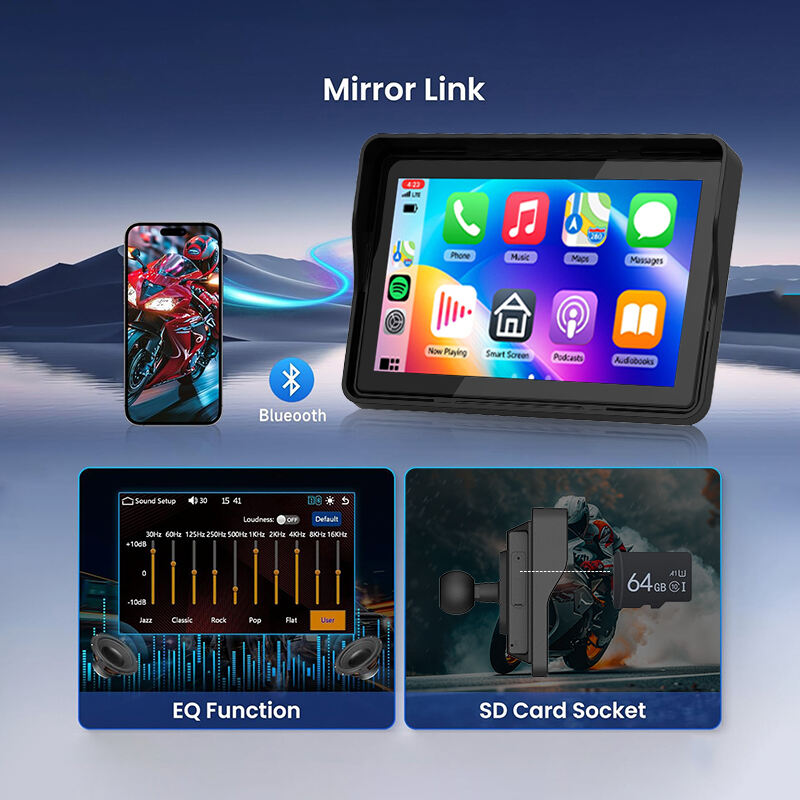The Evolution of Modern Motorcycle Recording Technology
The landscape of motorcycle safety and documentation has transformed dramatically with the advent of sophisticated motorcycle dash cams. These compact yet powerful devices have become essential equipment for riders who prioritize both security and adventure documentation. Today's motorcycle dash cams represent a perfect fusion of advanced recording technology and practical design, offering features that early innovators could only dream of.
Modern motorcycle dash cams serve multiple purposes beyond simple video recording. They act as silent witnesses during rides, providing invaluable evidence in case of accidents, capturing memorable journey moments, and even offering real-time navigation assistance. As we move further into 2025, these devices continue to evolve with increasingly sophisticated capabilities.
Essential Features of Premium Motorcycle Dash Cams
Advanced Recording Capabilities
The cornerstone of any motorcycle dash cam lies in its recording capabilities. Latest models offer 4K resolution with HDR support, ensuring crystal-clear footage in various lighting conditions. Wide-angle lenses, typically ranging from 140 to 170 degrees, provide comprehensive coverage of both the road ahead and peripheral areas. Dual-lens systems have become increasingly popular, allowing riders to simultaneously capture front and rear perspectives.
Night vision technology has also seen significant improvements, with advanced sensors capable of capturing clear footage even in low-light conditions. This feature proves particularly valuable for evening commuters or long-distance riders who frequently travel during darker hours.
Weather Resistance and Durability
Given the exposed nature of motorcycle riding, weather resistance has become a non-negotiable feature. Top-tier motorcycle dash cams now come with IP67 or higher waterproof ratings, ensuring functionality in heavy rain, snow, or dusty conditions. Impact-resistant casings protect internal components from vibrations and potential crashes, while UV-resistant materials prevent degradation from prolonged sun exposure.
Thermal management systems have also evolved, allowing these devices to operate efficiently in extreme temperatures ranging from -10°C to 60°C. This durability ensures consistent performance regardless of weather conditions or riding environment.

Smart Integration and Connectivity
Wireless Capabilities and App Control
Modern motorcycle dash cams leverage wireless technology for seamless operation and data transfer. Bluetooth and WiFi connectivity enable riders to quickly access and share footage through dedicated mobile applications. These apps often provide real-time video streaming, settings adjustment, and immediate access to recorded clips without physical cable connections.
Cloud integration has become increasingly common, offering automatic backup solutions and the ability to access footage remotely. This feature proves particularly valuable for fleet managers or riders who want to maintain a secure record of their journeys.
GPS and Safety Features
Built-in GPS functionality not only tracks routes but also provides valuable metadata for recorded footage. Speed logging, location stamping, and route mapping create a comprehensive record of each journey. Advanced models incorporate safety features like lane departure warnings, forward collision alerts, and speed limit notifications.
Some systems even offer real-time weather updates and road condition alerts, enhancing rider safety through predictive warnings and alternative route suggestions.
Storage and Power Management
Efficient Storage Solutions
Storage capabilities have expanded significantly, with support for high-capacity SD cards up to 512GB or even 1TB. Loop recording ensures continuous operation by automatically overwriting older footage when storage is full, while protecting important clips through incident detection algorithms.
Compression technologies have improved, allowing for longer recording times without compromising video quality. Some models offer dual storage options, combining local storage with cloud backup for enhanced data security.
Advanced Power Systems
Power management has evolved to address the specific needs of motorcycle applications. Modern units feature efficient battery systems that provide backup power for parking mode surveillance. Smart power management systems protect motorcycle batteries by monitoring voltage levels and automatically shutting down when necessary.
Quick-charge capabilities and USB-C connectivity ensure minimal downtime, while some models integrate with motorcycle electrical systems for seamless power delivery.
Frequently Asked Questions
How long can a motorcycle dash cam record continuously?
Most modern motorcycle dash cams can record continuously for 6-8 hours on a 128GB card at 1080p resolution. With larger storage capacity and lower resolution settings, recording time can extend to 12-16 hours. Loop recording ensures continuous operation by overwriting oldest footage when storage is full.
Are motorcycle dash cams legal everywhere?
While motorcycle dash cams are legal in most countries, specific regulations regarding mounting position and recording capabilities may vary by region. It's important to check local laws regarding video recording in public spaces and privacy regulations in your area.
How do motorcycle dash cams handle extreme weather?
Premium motorcycle dash cams are designed with IP67 or higher weather resistance ratings, protecting against rain, snow, and dust. They incorporate thermal management systems for operation in temperatures from -10°C to 60°C, ensuring reliable performance in various weather conditions.



